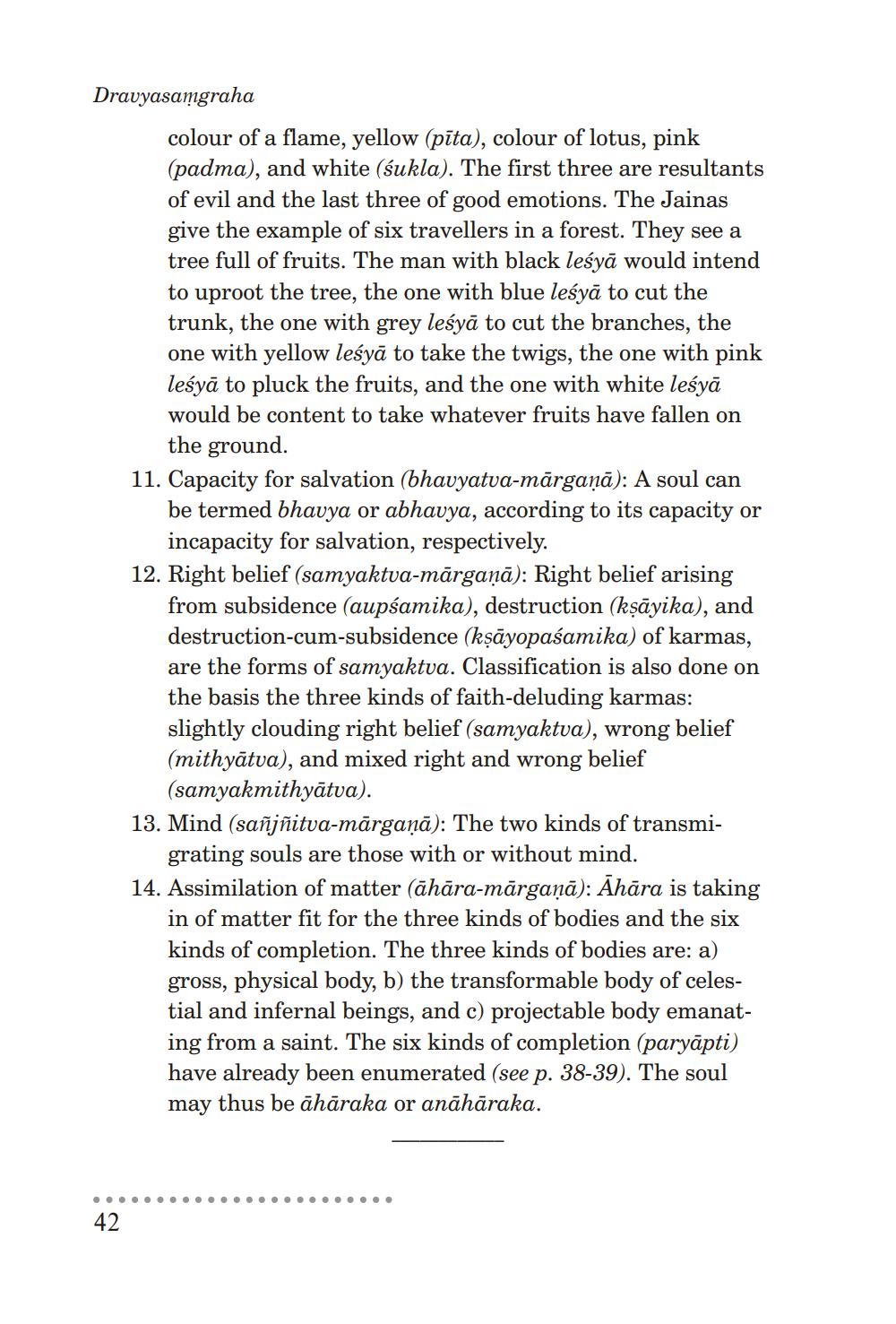________________
Dravyasamgraha
colour of a flame, yellow (pīta), colour of lotus, pink (padma), and white (śukla). The first three are resultants of evil and the last three of good emotions. The Jainas give the example of six travellers in a forest. They see a tree full of fruits. The man with black leśyā would intend to uproot the tree, the one with blue leśyā to cut the trunk, the one with grey leśyā to cut the branches, the one with yellow leśyā to take the twigs, the one with pink leśyā to pluck the fruits, and the one with white leśyā would be content to take whatever fruits have fallen on
the ground. 11. Capacity for salvation (bhavyatva-mārgaņā): A soul can
be termed bhavya or abhavya, according to its capacity or
incapacity for salvation, respectively. 12. Right belief (samyaktva-mārgaņā): Right belief arising
from subsidence (aupsamika), destruction (kṣāyika), and destruction-cum-subsidence (kṣāyopaśamika) of karmas, are the forms of samyaktva. Classification is also done on the basis the three kinds of faith-deluding karmas: slightly clouding right belief (samyaktva), wrong belief (mithyātva), and mixed right and wrong belief
(samyakmithyātva). 13. Mind (sañiñitva-mārgaņā): The two kinds of transmi
grating souls are those with or without mind. 14. Assimilation of matter (āhāra-mārgaņā): Ahāra is taking
in of matter fit for the three kinds of bodies and the six kinds of completion. The three kinds of bodies are: a) gross, physical body, b) the transformable body of celestial and infernal beings, and c) projectable body emanating from a saint. The six kinds of completion (paryāpti) have already been enumerated (see p. 38-39). The soul may thus be āhāraka or anāhāraka.
42




